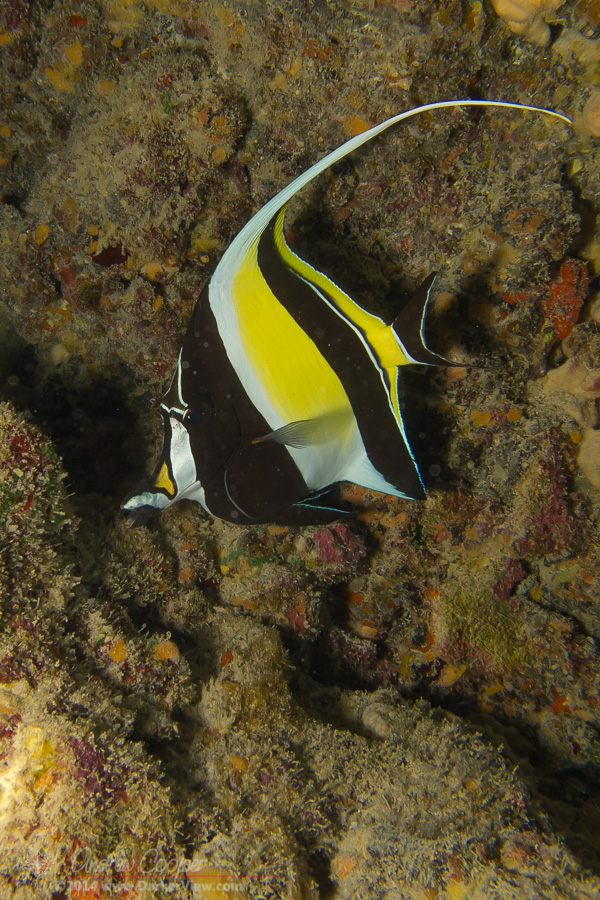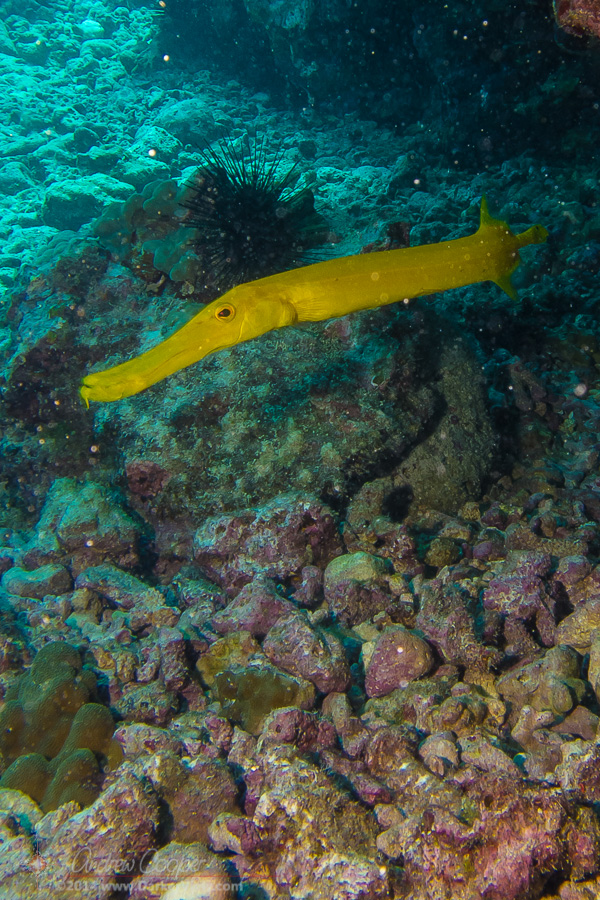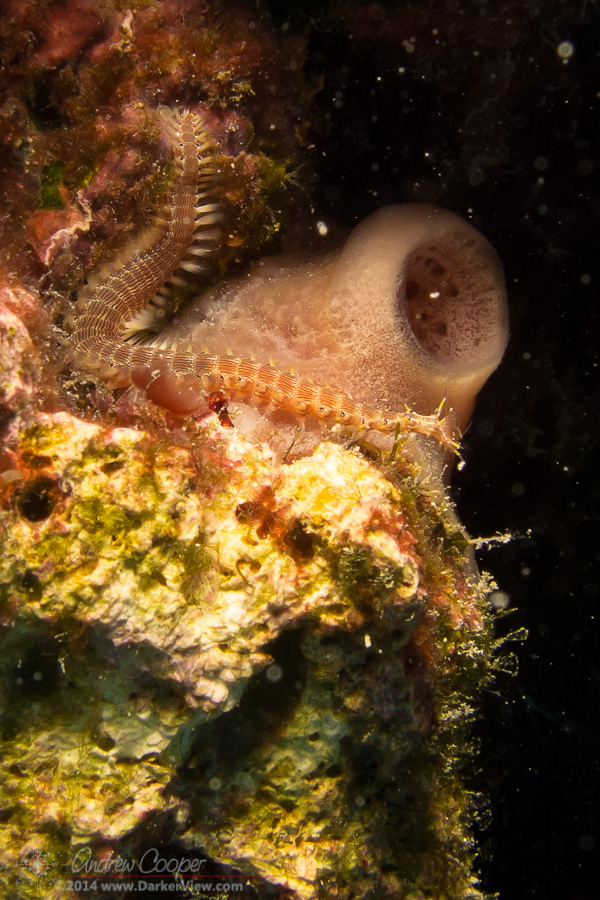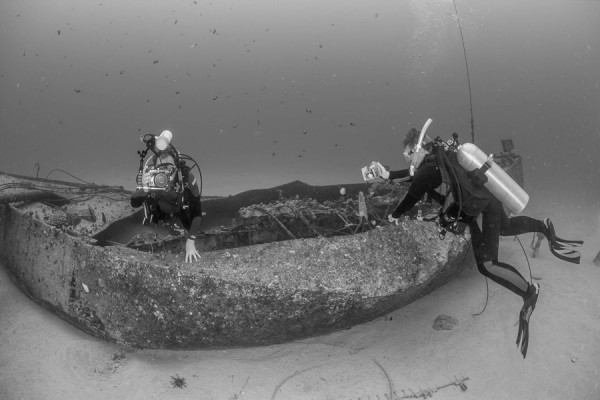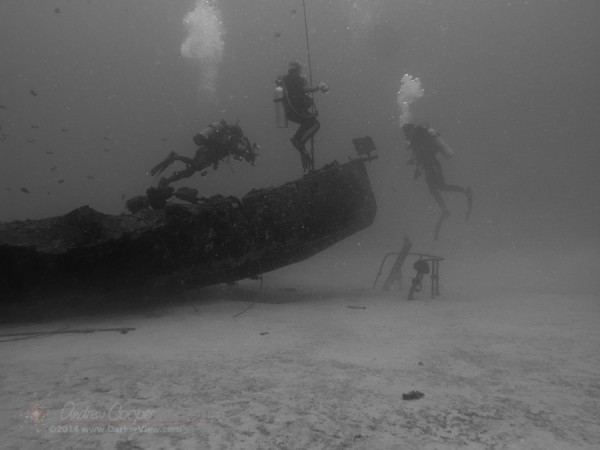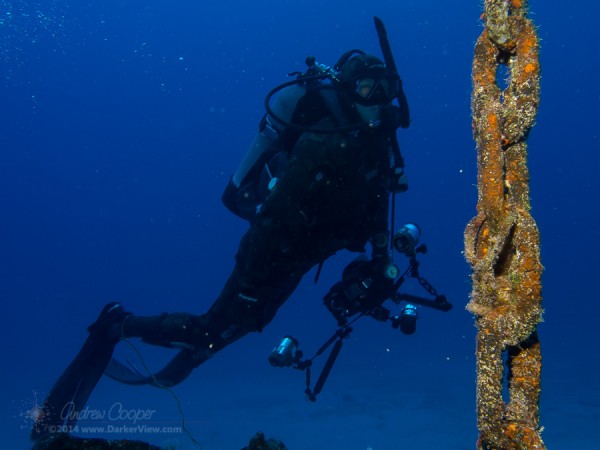
Tag: Diving
Postcard from the Reef – Moorish
Saturday on the Puakō Wall
The email is brief… Let’s go diving, my place 9am – Pete. It is all I need to plan a Saturday, just need to get the tanks filled.
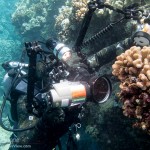
Conditions are pretty good, no swell or surf to create trouble crossing the shallow shoreline reef. Visibility could be better, it was only 30-40 feet. Andrew thought it was good, we looked at him and quickly let him know that this was downright murky for Puakō.
The usual dive plan for Puakō… Work the wall. Pete dives this section of the reef several times a week if the weather is good. We just follow him. If he bypasses some spot, it is not worth the time. Much of the dive is spend working the wall at 30ft depth and wandering in and out of the small caves that penetrate the reef.
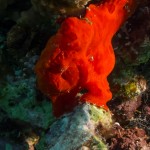
A lone turtle is found at the cleaning station, the usual swarm of tangs and surgeons nibbling the algae from the turtle’s shell. Midway through the dive we take a quick excursion over the face to check out the garden eels at about 80ft. With my last air I shoot a trio of racoon butterflyfish raiding the eggs of a sergeant major.
Beyond the frogfish there is nothing particularly special about the dive. It is simply a nice day to spend a little time underwater. As we come ashore we are not the only divers using the beach access point. There is another group that landed just ahead of us, we chat about what we have seen, sharing the easy camaraderie of fellow divers. Everyone is enjoying the morning, it is hard not to. Another dive on a pleasant first day of summer weekend.
Postcard from the Reef – Trumpetfish
Postcard from the Reef – Banded Urchin
Postcard from the Reef – Fireworm
Wreck Photo Shoot
Exploring the Naked Lady
Postcard from the Reef – Down Deep
Diving the Naked Lady
A different sort of dive. There are few wrecks to dive on the Big Island, the Naked Lady is one of the few. An Easter Sunday morning spent out on the water, enjoying a beautiful day. As we came back across Kailua Bay from diving at Casa Cave we decided to dive the wreck as our second dive of the day.

It is 110 feet to the sand where the Naked Lady lies on the bottom. This is a short dive, at this depth our bottom time is limited to less than 20 minutes due to nitrogen absorption. Even with the safety stops on ascent the entire dive was about half an hour, I surfaced with over 1200psi of air left in the tank. Considering I often last over an hour with a 80cft tank this was a short dive indeed.
Deb and I did not bother with the mooring line as we dropped to the bottom. The water was clear enough we could see the wreck on the sand 100ft below. With no current we simply dropped, in the clear water this was a surreal, slow motion free-fall. Seeing the sand approaching I did not bother to trim buoyancy, but allowed myself to hit the sand a few feet from the hull. The gauge read 109ft as I knelt on the bottom. I took a couple photos, trimmed for neutral buoyancy and started exploring.

Aside from a few colonies of cauliflower coral on the wreck itself there is no coral visible, simply a flat plain of sand that stretches in all directions. A swarm of fish surround the wreck, snappers and dasyllus the most numerous. Oddly there are numerous rough spined urchins on and around the hull.
There is little sign of life away from the wreck, the sand seems sterile from a distance. Upon closer examination even this sand desert teems with life. Burrows and tracks betray numerous residents. I take a few photos of a colorful goby I have yet to identify, it does not appear in the usual guidebooks.
The Atlantis Submarine that gives tourists a ride in Kailua Bay often tour the Naked Lady. The submarine was present when we arrived at the mooring, but had moved off by the time we dropped to the wreck. It would have been fun to wave at the tourists.

The location results in a different dive profile as well. On this island we usually dive deep and then spend the rest of the dive slowly working our way back up the reef, ending in shallow water. A slow ascent eliminates the required safety stops used in recreational diving. Here there is no sloping reef, simply a drop to the bottom. Time to remember those safety stops and monitor the dive computer closely. This ascent required two stops, one at 50′ and another at 15′ to allow the nitrogen to transpire out of our tissues.
With two dives done it had been a great day and we were ready for more. Alas we had a pile of empty tanks and a distinct lack of full. Nothing left but a return to harbor, clean up the boat and an early dinner at the fish market. A great Easter Sunday, far more fun than sitting in church.

